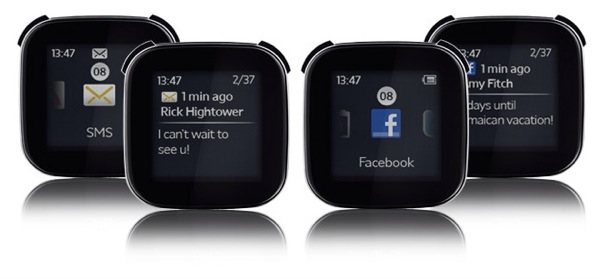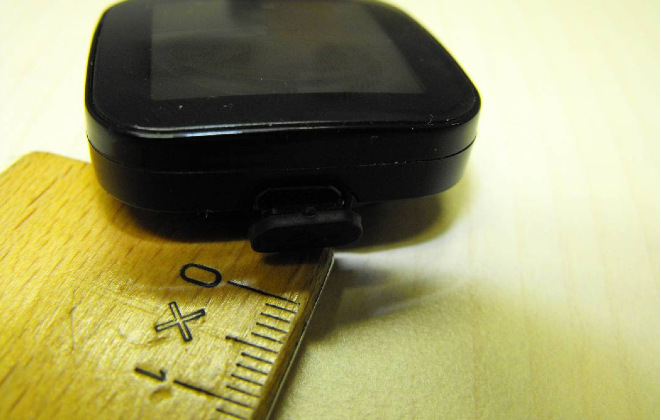

Here's a bit of trivia: this wasn't the first time Palm was involved with smart watches. Palm's OS lives on in LG TVs, though unlike Samsung's Tizen it is no longer part of the smart watch market. The Watch Urbane LTE, however, did offer a 4G connection, but used a different OS instead - webOS, believe it or not.
#Reloj liveview sony ericsson android#
The LG Watch Urbane also ran Android Wear and had a circular P-OLED display but no telephony or mobile data. The next year brought the Urbane watches, which were a bit weird. The LG G Watch R was similar, though it did switch to a circular P-OLED display. LG also returned to the segment with 2014's LG G Watch, which ran Android Wear and had a square LCD. The nubia Alpha and Amazfit X are more recent examples of this design. But the Gear watches (and more recent Galaxy watches) have been based on Tizen exclusively.īefore we go on, we'd like to mention the Gear S, which featured a curved Super AMOLED display back in 2014 - at 2" it was huge for a watch and an impressive demo of what AMOLED displays could achieve.
#Reloj liveview sony ericsson Bluetooth#
Still, you could read SMS, view MMS and make calls using the watch (as long as your phone was within Bluetooth range).Īnd more importantly, there were apps - 70 of them at launch, including Twitter, Facebook, Evernote, MyFitnessPal and RunKeeper.Ī year later came the Samsung Gear Live, which did run Android on a Snapdragon 400 chipset. You had to share those from your phone, however. The Galaxy Gear had a 1.9MP camera that could shoot 10-second video clips in 720p. Note that despite the "Galaxy" branding, this ran Tizen on an 800 MHz processor with 512 MB of RAM and 4 GB storage (smart watch memory capacities have changed surprisingly little since then). The Galaxy Gear was an actual smart watch as there was no telephony or mobile data. In 2013 Samsung tried its hand at making a smartwatch again. It didn't have "apps", though it did support plug-ins for Facebook and Twitter, for example. Exercise tracking is still a major use case for smart watches. ANT+ enabled it to connect to a speed/cadence sensor on a bike or to external pulse sensors (Bluetooth could be used as well). It came out in 2011 and had much more advanced exercise-tracking features. The Motorola Motoactv was similar to the LiveView. The 3 was one of the first smart watches to have a GPS receiver built in, by the way. It wouldn't be until the Sony SmartWatch 3 (sadly, the last of its kind) that the company would make the jump to Android Wear. Two years later Sony would release the so-called "Sony SmartWatch" that still had no smarts built in, it was just a better LiveView.

Seriously, this couldn't even keep the time, instead it needed to synchronize with your phone at every boot-up. It was just a wireless display that showed content that the phone pushed to it. Okay, it was watch-shaped, but unlike true smartwatches it was completely useless without a phone. The Sony Ericsson LiveView from 2010 was an early example of a smart band. It's not impossible, but not easy either, despite another 10 years of technological progress. The LG model even had a camera and made use of its 3G connection to send and receive MMS - just imagine going out in 2009, snapping a photo and instantly sharing it with your friends, all without your phone. Then they were just like any other phone, except strapped securely to your wrist - you can't forget it or lose it and you don't have to keep it in your pocket when going out for a run. The Samsung S9110 and LG GD910 got that much right at least, they were ideally used with a Bluetooth headset. This was before Bluetooth, though, so unless you wanted to hold it up to your ear (and look weird doing it), you had to use a wired headset. It weighted 50g and measured 20 mm thick, but it was all worth it since you could make calls on a 2G network for up to 90 minutes. The WP10 may have taken the name "watch phone" a little too seriously - it very much looks like a phone from the era, including the external antenna, just with a wrist strap. And it had been 10 years since the SPH-WP10 - Samsung's first watch phone - so having another go at it probably made sense. Sometimes companies try things out before the tech is ready. And with no Wi-Fi and tiny battery, tethering wasn't really an option either. Texting on them was tricky, web browsing was out of the question. Having a phone on your wrist was cool, but these couldn't really run apps (not even J2ME). You may remember two "3G watch phones" from 2009 - the Samsung S9110 and LG GD910.

We'll now trace their history all the way back to the early gadgets, which weren't all that "smart". That used to be the case, anyway, as wearables market is on the rise these days. Smartwatches had more success in space than they did on Earth.


 0 kommentar(er)
0 kommentar(er)
